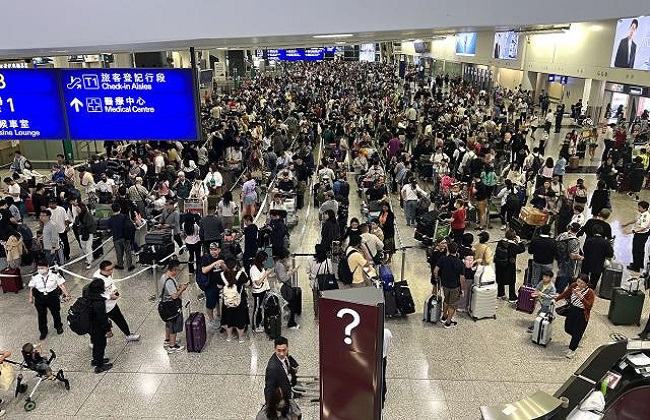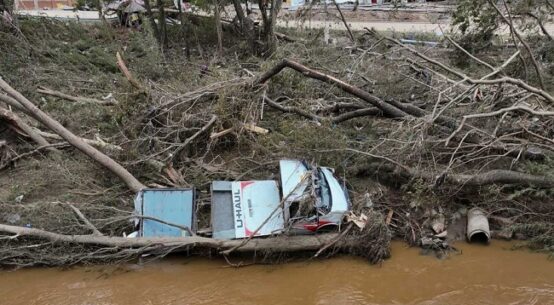
Asian finance hub Hong Kong halted trading at its stock exchange on Monday and closed schools, after Typhoon Koinu generated torrential rainfall overnight.
Koinu — which caused one death in Taiwan last week — had weakened into a severe tropical storm by Monday, said the Hong Kong Observatory, as it moved toward the coastal areas of China’s Guangdong province.
The storm caused non-stop rain overnight, leading the agency to issue a “black” rainstorm warning signal — its highest — at 4:00 am local time (2000 GMT).
More than 150 millimetres were recorded over most parts of the territory since midnight Monday, and rainfall exceeded 300 millimetres over some parts of urban Hong Kong island, data showed.
“Because of seriously flooded roads and inclement weather conditions, you are advised to take shelter in a safe place and stay there,” the observatory said.
The city’s third-highest storm warning signal — “T8” — was to remain in place until 11:40 am local time.
Due to the storm warning, trading at the city’s stock exchange was to be suspended in the morning session, but was expected to resume at 2:00 pm.
Schools and daycare centres, ordered to shut when authorities issued the T8 signal a day earlier, remained closed Monday.
This was the second time in a month the city has issued the black rain warning.
In early September, Hong Kong experienced its highest rainfall in nearly 140 years, flooding subway stations and malls, and causing landslides.
In China’s Guangdong province — where Koinu is expected to sweep past en route to Hainan island — the cities of Zhuhai and Jiangmen issued a Level III emergency response, according to the Xinhua news agency Sunday.
That meant more than 35,500 fishing boats had to return to port, while dozens of coastal scenic areas were temporarily closed.
Before moving to Hong Kong, Koinu had grazed nearby Taiwan, bringing torrential rain and record-breaking winds to its outlying Orchid Island.
The storm left at least one dead in Taiwan, knocking out power to hundreds of thousands of homes.
Southern China is frequently hit during the summer and autumn seasons by typhoons that form in the warm oceans east of the Philippines and then travel west.
But climate change has made tropical storms more unpredictable while increasing their intensity — bringing more rain and stronger gusts that lead to flash floods and coastal damage, experts say.


